Sony has always been renowned for its high-quality audiovisual products, including TVs, video recorders, DVD players, and cameras. If you’re searching for the best Sony camera for video, you’ve come to the right place!
In this article, we’ll explore the strengths and weaknesses of Sony’s top cameras across different budgets. Whether you’re eyeing a high-end powerhouse like the Sony a1 or a compact option like the ZV-1, we have recommendations for you.
The Sony a1 is ideal for professional photographers or serious enthusiasts due to its high price point. For most users, we recommend the Sony a7 IV. Your choice will depend on your budget, intended use, and whether you need 8K resolution.
Let’s take a brief overview of the main contenders before diving into the details of each model.
Now, let’s examine each camera in detail.
1. Sony Alpha 7 IV

The Sony a7 IV is an outstanding full-frame mirrorless camera, offering oversampled 4K 60p video and the S-Cinetone color profile. It features real-time Eye AF, SteadyShot image stabilization, high resolution, a fast frame rate, and numerous customization options.
While the Sony a7 III was already an excellent video camera, the a7 IV enhances the experience with higher resolution and additional features, albeit at a higher price. These new features include Gyroscopic Stabilization, unlimited recording, Lens Breathing Correction, and an Anti-dust Shutter. It also boasts a sharper LCD and viewfinder, a full-size HDMI port, and CFexpress Type A card support, making it a superior option to competitors like the Canon R6.
The a7 IV delivers 10-bit 4K footage, providing greater flexibility in post-processing Log footage and full HLG capture for HDR TVs. The new 60p option is ideal for capturing fast action or creating slow-motion effects at 24, 25, or 30p. However, this footage is taken from the Super35/APS-C area of the sensor, which may result in increased noise.
Although waveforms for optimizing exposure are not included, the a7 IV offers several useful video features:
- Breathing Compensation: Ensures the framing remains consistent as the camera focuses, though it involves cropping and rescaling the footage and only works with select Sony G and G Master lenses.
- Focus Map: Provides a color-coded view of the depth of field with the current aperture.
- Video Stabilization: Available in two modes—Standard and Active. Standard uses the lens or camera’s IBIS system, while Active adds digital stabilization. Active stabilization, however, results in a slight crop and struggles with significant movement. The camera records gyro sensor data, which can be corrected using Sony’s Catalyst software in post, though this is time-consuming.
Pros
- Excellent image quality
- Super responsive autofocus
- 5.5 stops of image stabilization
- Fully articulating rear screen
- Powerful video capabilities (4K/60p, 10-bit video) and live streaming
Cons
- More expensive than the Sony a7 III
- 6 fps with 14-bit lossless compressed or uncompressed RAW files
- Significant distortion with moving subjects using a silent shutter
- Occasional issues with rolling shutter
- Requires a fast memory card
2. Sony Alpha 1
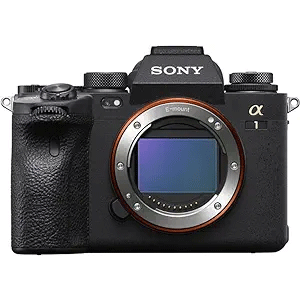
The Sony a1 is a nearly perfect full-frame mirrorless camera—if you can afford it. Its impressive resolution, rapid burst rate, exceptional AF system, and 8K video capability make it a formidable choice.
The a1 is only the second hybrid camera to offer 8K video recording. It can record 10-bit output to either SD or CFexpress Type A memory cards without overheating. It can shoot for an hour at 8K/24p or 30 minutes at 4K/120p (equivalent to two hours of playback) and then repeat the process after just 15 minutes of cooling down.
Given the limitations of most displays, you might question the need for 8K resolution. However, it provides greater detail and better color rendition when downsampling to 4K and allows for panning and cropping in post-production, simulating the effect of using multiple cameras—ideal for run-and-gun shooting.
The camera’s AF tracking system excels in video mode, with tap-to-track and Real-Time face and eye detection for human subjects. Additionally, SteadyShot Active digital and mechanical stabilization delivers much smoother handheld footage. While it doesn’t affect sharpness, it does result in a 1.1x crop.
The a1 shares many video specs with the a7S III but adds the ability to capture full-width 8K video at 24 and 30p, as well as 10-bit 4:2:0 H.265 footage at 200 or 400 Mbps. For slow-motion shots, it can record at 4K/120p with a 1.13x crop.
Thanks to the sensor’s rapid readout speeds, rolling shutter is not an issue. These speeds range from 15.2 ms (for 8K/30p) to just 4.6 ms (for 1080/60p).
The only downside to 4K video is pixel binning, which merges adjacent pixels and loses detail compared to downsampled 8K footage (which isn’t available). To achieve more detail, you can shoot in APS-C/Super 35 mode, producing 4K footage oversampled from a 5.8K region of the sensor, though it will have slightly more noise.
The camera’s ergonomics also pose a challenge. The touchscreen is small, has a low resolution, and is not fully articulated, making it less suitable for selfies or vlogging.
Pros
- Large sensor captures extensive detail
- High frame rate of 30 fps
- Eye tracking for humans, animals, and birds
- Easy customization
- Silent shooting for discreet situations
- Incredible 8K/30p Ultra HD video
Cons
- Expensive
- Highest frame rates only available for JPEG, HEIF, and lossy compressed RAW files
- Eye tracking must be selected manually
- Small rear LCD screen
- No GPS
3. Sony Alpha 7S III
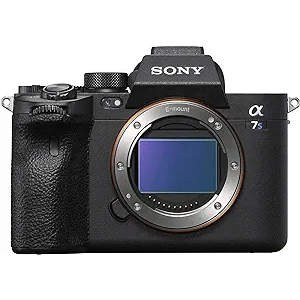
The Sony a7S III is a slim and compact full-frame mirrorless camera, perfect for videographers. It features 4K video with full pixel readout, IBIS, excellent autofocus, an HDMI connection, a wide ISO range, picture profiles, and outstanding low-light performance (the S stands for Sensitivity).
You can record unlimited 4K UHD video at up to 120p in 10-bit 4:2:2 encoding and capture 16-bit RAW video at up to 60p. Vloggers will appreciate the fully articulating touch screen and 5-axis IBIS with SteadyShot. The camera also supports high-speed CFexpress Type A cards.
The a7S III’s fast readout speeds of 7-8 ms and low-resolution sensor minimize rolling shutter issues. However, the readout speed isn’t quite fast enough to avoid a slight crop when shooting 120p footage.
The autofocus system requires tapping the rear screen to start tracking your subject, but it performs well. It also utilizes face and eye detection if these options are selected. However, touch tracking is recommended, as face and eye detection alone may fail if the subject looks away.
For RAW output over HDMI, you’ll need to use the 12-bit ProRes RAW format with an Atomos external recorder. The options for S-Log3/SGamut3 and S-Log3/CineGamut3 modify the metadata for programs like Final Cut Pro to render the footage. This results in a 4.2K (4264 x 2408) resolution, which may appear softer and noisier than expected.
The camera doesn’t apply sharpening and noise reduction to compressed footage saved internally, leaving that for post-production. This allows for more control but requires additional time and effort. Additionally, some Final Cut Pro tools, such as white balance options and the ISO pull-down menu for brightness adjustment, are not available.
Pros
- Exceptional low-light performance
- Excellent ISO range
- Fantastic autofocus system
- Impressive high-resolution EVF
- Microphone and headphone ports
Cons
- Expensive
- Low 12.2 MP resolution for photos
- Poor battery performance
- No 8K video
4. Sony a9 II
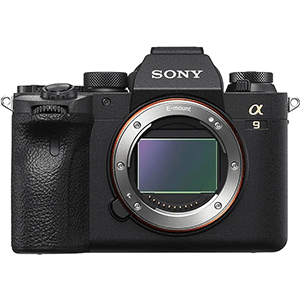
The Sony a9 II is a compact full-frame mirrorless camera designed for high performance. It features 4K video, advanced subject recognition and tracking, a fast frame rate, and a 3″ tilting touch screen. Additionally, it comes with an Ethernet port, high-speed 2.4 or 5 GHz Wi-Fi, and secure FTP transfer options.
The a9 II retains the same video capabilities as the original a9. It can shoot 4K/24p using the full sensor width or 4K/30p with a 1.2x crop, with the latter reducing rolling shutter effects. For slow-motion clips, you can shoot 1080p at 120p.
Sony highlighted the a9’s superior 4K movie image quality, claiming it was the best among full-frame interchangeable lens cameras. The camera’s IBIS system and compact design make it ideal for run-and-gun filmmaking. The tilting screen allows for low-angle shooting without interfering with connected cables. However, the a9 II would have been significantly better with the addition of picture profiles and Log capture tools for more flexible post-processing, which are inexplicably missing.
Pros
- Impressive 20 fps continuous shooting
- Lightning-fast autofocus
- Improved ergonomics
- Great file transferring speeds
- 5-axis in-body image stabilization to counter camera shake
Cons
- No in-camera RAW image processing
- Confusing menus
- Poor battery performance
- No S-Log video
- Subpar video quality compared to newer full-frame cameras
5. Sony ZV-1

The Sony ZV-1 is an affordable, compact camera perfect for recording 4K HDR videos without overheating and offers livestreaming capabilities. It features excellent image stabilization, fast hybrid autofocus, and a variety of professional features for post-processing video.
Although the video output is limited to 8-bit, the ZV-1 can handle 4K video up to 30p and Full HD footage up to 120p. It also offers high-speed mode at 960 fps, though at a lower resolution. The footage is sharp and smooth with minimal rolling shutter. The camera includes SteadyShot image stabilization, wind noise reduction, and common tools such as zebra stripes and focus peaking.
Targeted at the vlogging market, the ZV-1 comes with a fully articulating touch screen, a zoom rocker, and a shutter release that can be operated while holding the camera at arm’s length. Customizable controls make it easy to switch between exposure, image quality, and other settings for stills and video. It also features a directional three-capsule microphone with a deadcat windscreen, eliminating the need for an external mic. Additionally, the optional Bluetooth handgrip, which doubles as a tripod, includes controls for video recording, shutter release, and a custom function button.
Key features for video include:
- Product Showcase: Smooth focus shift from your face to a product by prioritizing nearby objects.
- Background Defocus: Opens the aperture fully with the press of the C1 function button, though the resulting higher shutter speed may lead to choppy footage.
- Soft Skin Effect: Smooths wrinkles in stills and video, available in low, mid, or high settings, with the high setting appearing unnatural.
For non-vloggers, the lack of an EVF can be problematic, especially in bright sunlight. Additionally, there’s no headphone socket, so monitoring preset audio levels isn’t possible.
Pros
- Compact body
- Excellent eye-recognition autofocus
- Rotating screen
- Forward directional mic
- Additional external mic port
Cons
- Poor image stabilization
- Disappointing battery life with video
- Fixed lens is not a wide-angle
- Limited support for webcam software on some Mac operating systems
Final Verdict
There’s a Sony camera on this list for virtually anyone looking to shoot video, regardless of their needs. If you’re after the absolute best, the Sony a1 is unmatched, though it comes with a hefty price tag.
For a slightly more affordable full-frame mirrorless option, the a7 IV is likely your best bet. However, there are several other models that might suit your needs.
For vloggers or frequent travelers, the ZV-1 could be the perfect fit.

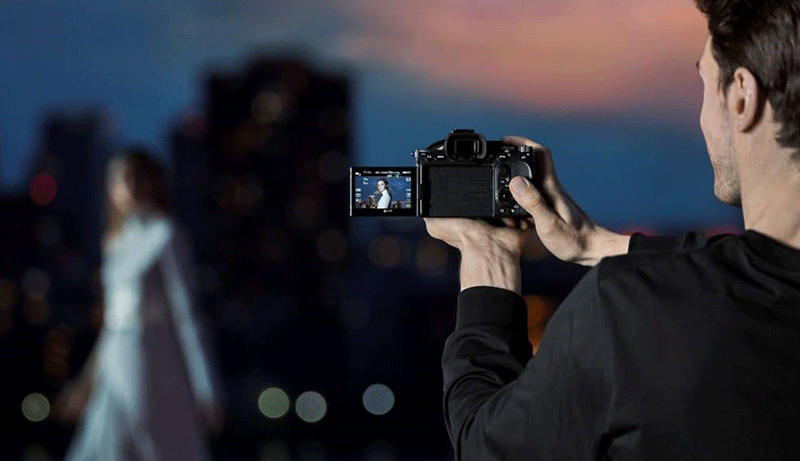
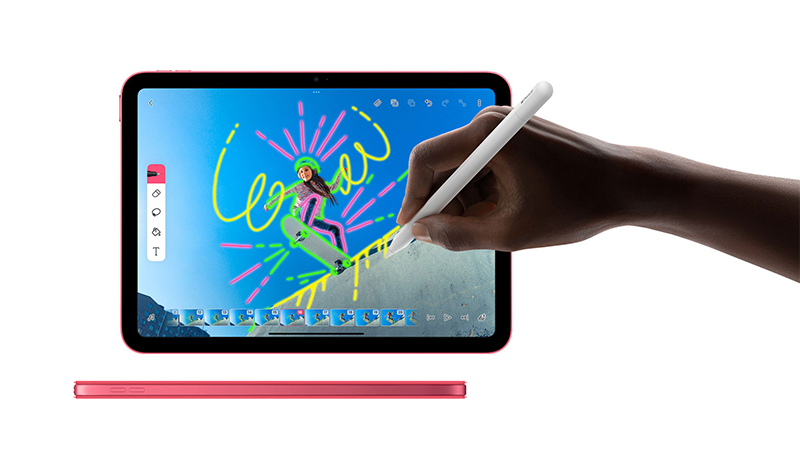

Leave a Reply